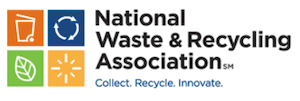
Water Infrastructure
NWRA POSITION
NWRA supports the creation of port performance standards and metrics as well as modernization and scaling to meet demands.
BACKGROUND
Solid waste can be loaded onto barges for transport to landfills or delivery to waste-to-energy facilities. Recyclable materials may also be loaded on to large container ships for transportation to facilities where it is then recycled and used in the manufacture of new products. It is vital that America’s ports and waterways be able to handle these shipping volumes.
NWRA supports the creation of port performance standards and metrics to ensure that available infrastructure is being used efficiently. America’s ports must be scaled to meet demands. Modernization of our ports is essential as the capacity of cargo ships has increased to upwards of 18,000 containers. There are increased costs associated with not being able to get the largest ships in to these ports. By increasing the size of ports, the speed at which a vessel is able to load/unload and then be dispatched will increase which is crucial for shipping companies to remain on schedule. This also benefits ports due to the shorter container dwell time and ability to optimize port utilization and productivity.
Fully funding important water infrastructure projects will return dividends to the American people through an increasingly efficient water transportation network and better environmental stewardship.
TALKING POINTS
- NWRA supports the creation of port performance standards and metrics as well as modernization and scaling to meet demands and ensure that available infrastructure is being used efficiently.
- Solid waste can be loaded onto barges for transport to landfills or delivery to waste-to-energy facilities and recycled for use in the manufacture of new products.
- Modernization of our ports is essential as the capacity of cargo ships has increased to upwards of 18,000 containers.

